An in-depth analysis of the Atkinson Mk.1, the model range which saw the Big A from Preston switch from coachbuilt cabs to glassfibre.
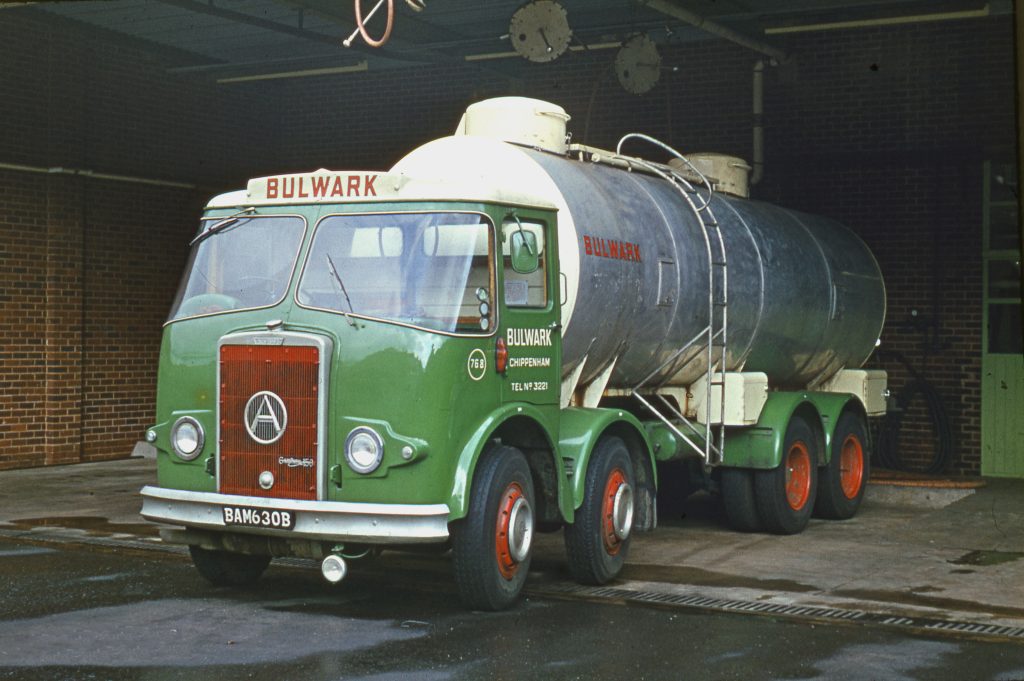
By Peter Davies
Some lorry manufacturers sought to score points over their rivals with futuristic cab designs, often commissioned from exotic sounding European designers. Atkinson of Preston, however chose a different approach and stuck with their time-honoured traditional style. The iconic outside radiator and ‘Big A’ badge had became their trademark over the years, and seemed to have its own special appeal. On the odd occasions that they did try to modernise, as with the Bodyline, Guardsman and the later Viewline cabs, customers gave them an emphatic thumbs down.
Though a relatively low-volume producer, Atkinson ranked with the leading ‘premium’ manufacturers. They built an extensive range from four-wheelers up to maximum weight artics and even specialist heavy haulage tractors. As well as having a good share of the UK market they enjoyed a healthy export performance. They had agents in over 50 countries. These included Australia, New Zealand, India, South Africa, South America, the Middle East and even the Far East.
Up until the late 1950s Atkinson had favoured the good old ‘Bow-Front’ coach-built cab while optional proprietary cabs. These were also available from the likes of Duramin, Marshall’s of Cambridge and Kennings according to customer choice. Overseas customers often went in for locally built cabs to suit their own territories.
Atkinson MK1 Launch
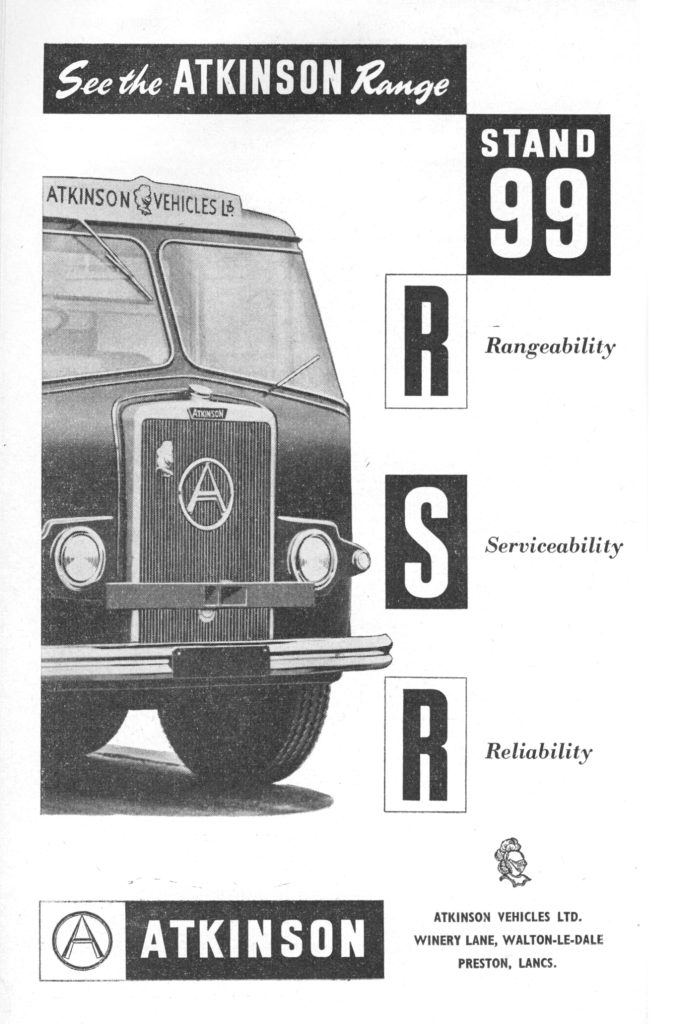
In 1958 Atkinson switched away from traditional coach-built timber and aluminium cabs. Instead, they turned to glassfibre with what became known as the ‘Mk.1’. The new cab was described by Atkinson as their ‘De-luxe composite construction fibreglass cab’. It was launched at the 1958 Earls Court show where it appeared on the four eight-wheelers on the stand. However, one might describe it as a rather low-key announcement – the leading trade journals hardly gave it a mention.
The fact is, the new ‘Mk.1’ was well and truly upstaged by the mighty 6×6 100-ton Omega overseas tractor. This formed the centerpiece of the Atkinson display. The old coach-built ‘Bow-Front’ cab was still offered and continued to be available alongside the Mk.1 right up until 1963/64.
Among the Mk.1’s notable features was its panoramic, wrap-round windscreen. This provided much-improved vision as well as improving the external appearance. Another benefit of glassfibre is a worthwhile saving in weight. Despite its low-key debut the Mk.1 went on to become standard fitment. It gave Atkinsons a much-needed fresh look without abandoning that much-loved outside radiator.
Tried and tested mechanicals
Mechanically the Mk.1 cabbed models were not much different from their forerunners. The well-proven formula of Gardner engine, David Brown gearbox and Kirkstall axles just carried on. Atkinson had settled on these tried and tested components and they had proved highly successful over the years.
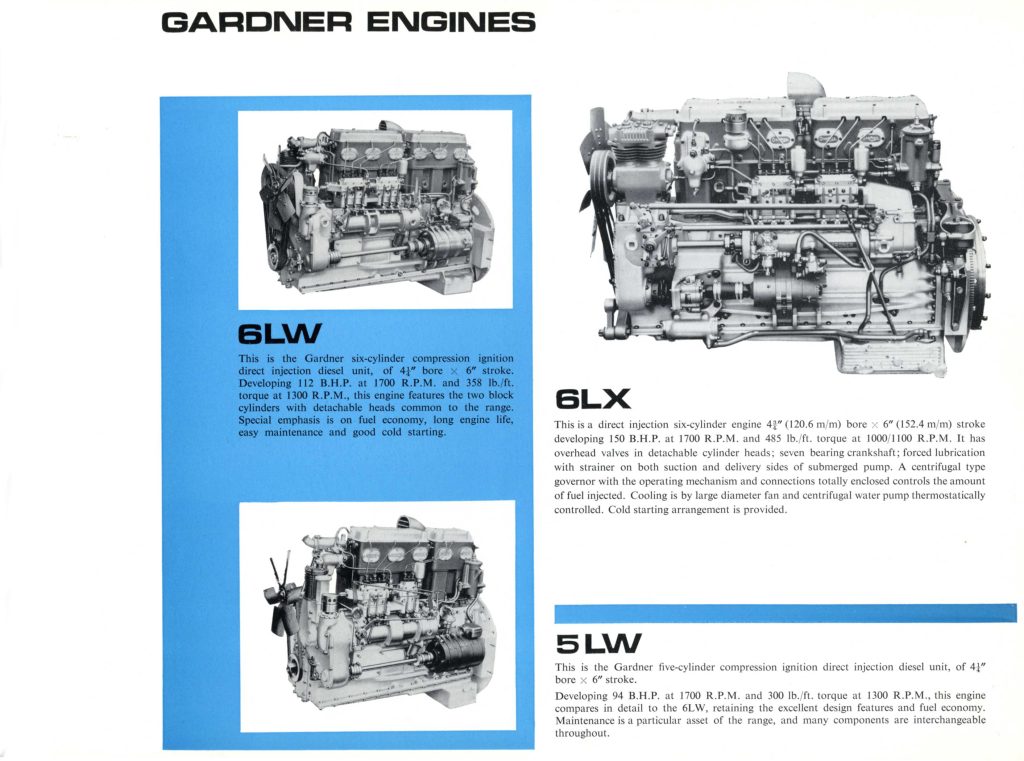
One notable practice on the part of Atkinson was their preference for fabricated steel components as opposed to castings.
Steel plate meant components like spring hangers and brake levers out of steel plate such parts could be made quicker, and at lower cost. They were also stronger at absorbing sudden stresses which could cause castings to fracture. They could also be tailored to a specific vehicle without having to produce a new casting.
Atkinson Mk.1 for the motorway age
In 1958 the UK Construction & Use regulations hadn’t changed significantly since the 1940s apart from one or two minor increases in gross weights. However the new motorway age was just beginning and there was growing demand for more power. The old Gardner 6LW with 112bhp was all very well when eight-wheelers grossed 22tons and the speed limit was 20mph. But, as weights and speeds increased, it was no longer up to the job. Gardner, accordingly, launched the new 150bhp ‘6LX’ in 1958, coinciding with the arrival of the Mk.1 cabbed Atkinsons.
The new 6LX eventually became the main power unit for the heavier models. The old 4LW, 5LW and 6LW still carried on for certain models at lower weights. Atkinson had tried out a 150bhp rigid eight-wheeler with a Gardner 8LW back in 1955 but the long straight-eight protruded into the load space. However the 8LW had been widely available on export models, especially for heavy tractor units.
Comprehensive Range
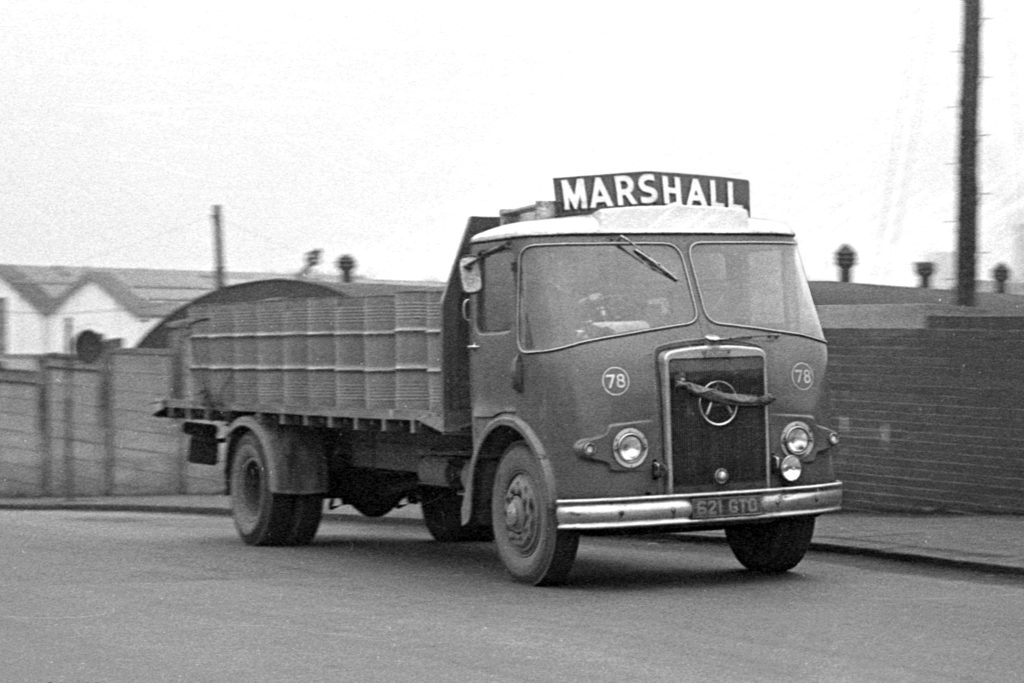
Atkinson’s late fifties Mk.1 range included four-wheelers for nominal payloads of 6, 7 and 9 tons. The 6-tonner was the L644, powered by the Gardner 4LW. The heavier 746 and 946 models had the 6LW and 6LX respectively. Those with the 6LX had an X suffix, e.g. L946X. There was a choice of tractor units beginning with the lightweight ST1044 and ST1045 designed for automatic coupling. Then came the T744, 745 and 746 for gross combination weights of 16, 22 and 24 tons. The last digit in the model designation indicated the engine – 4LW, 5LW or 6LW. At first the lightest ST models had the old Bow-Front cab as standard.
Multiwheel Rigids
When it came to rigid multi-wheelers, the range consisted of twin-steer sixes, six-wheelers and eight-wheelers. At that time eight-wheelers were seen as the leading choice for long distance, bulk haulage and tippers in the construction industry. Twin-steer six-wheelers, popularly known as ‘Chinese Sixes’, were the TS1065 and 1066. These, as the designation shows, had the 5LW with 94bhp and the 112bhp 6LW respectively. The TS1066 also had the option of the more powerful 6LX with 150bhp once it came on stream. This engine would have been the choice for drawbar operation.
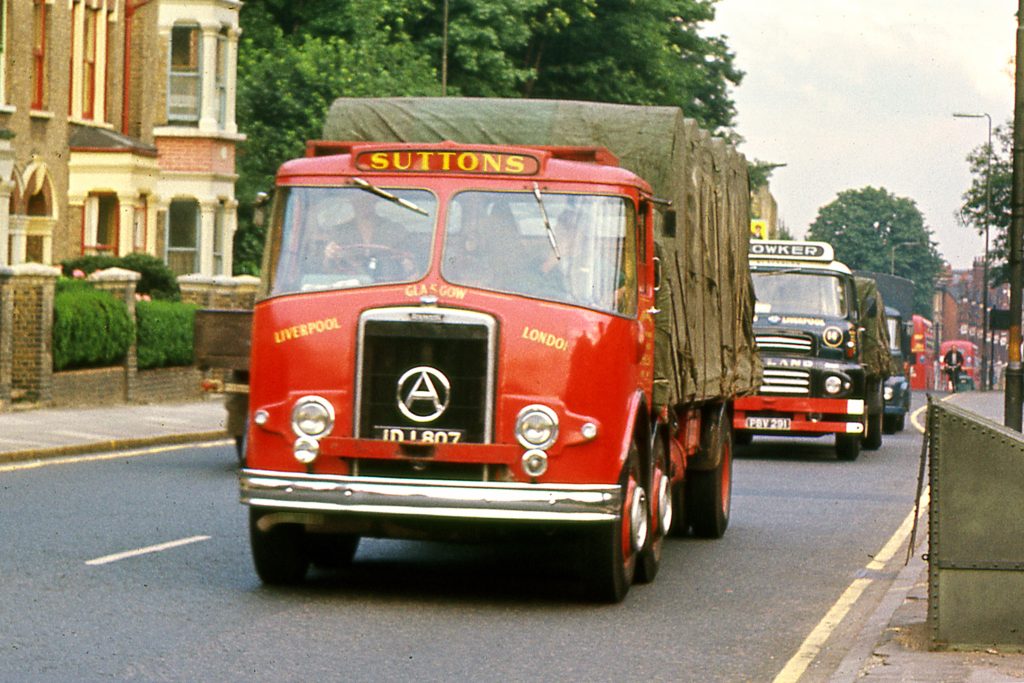
Six-wheelers were designated S, M or L1366 (Short, Medium or Long). The ‘13’ was the nominal payload rating in tons. Likewise eight-wheelers were S or L1786. When new legislation took effect after 1964 the designations were based on gross weight as opposed to payload. Thus four-wheelers became ‘1645’ or ‘1646’ while six-wheelers were ‘2266’ and eight-wheelers ‘2486’ and ‘2686’. The latter being the new long wheelbase 26ton gross model allowed under the new 1964 regulations
Atkinson MK1 Development
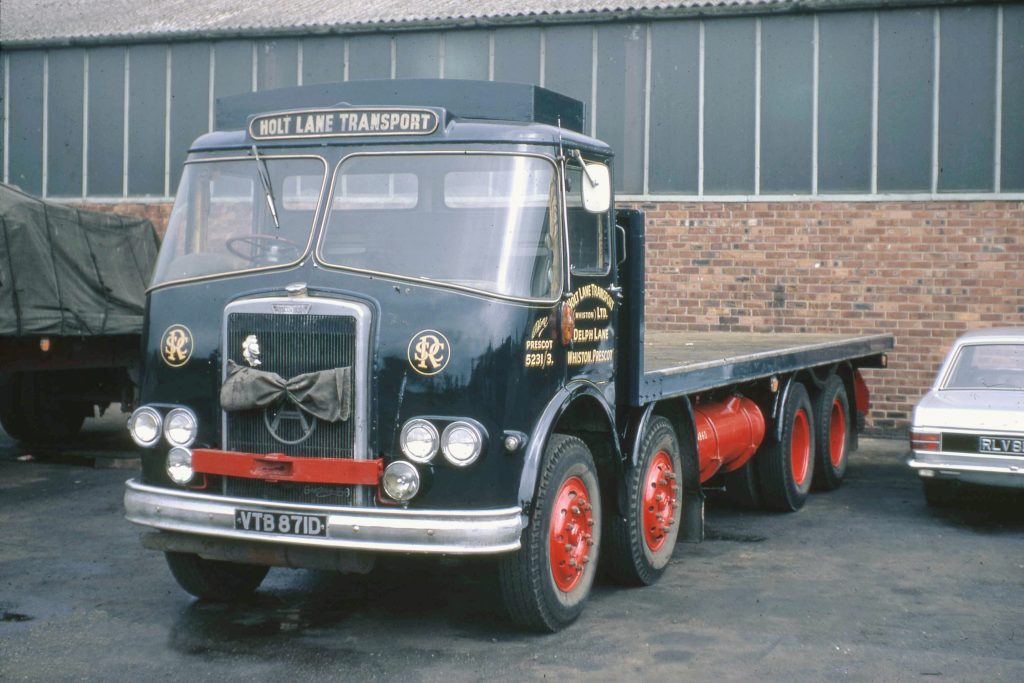
Until 1962 the Mk.1 cab hadn’t changed significantly but the company evidently thought it was time to modernise their image and they announced what they described as the ‘Full-front De-Luxe’ version, later dubbed the ‘Bodyline’. This did away with the outside radiator and just had a small slatted grille. It also featured four headlamps. While the new style cab wasn’t that popular it sold in modest numbers while the old ‘outside rad’ version continued in production. One Bodyline feature that did survive was its four-headlamp arrangement which was then adopted across the range.
Still eager to advance its cab designs, Atkinson launched a completely new alternative to the Mk.1 in 1964, called the ‘Guardsman’. Once again it failed to take off and was promptly dropped. The last attempt, perhaps marginally more successful, was the 1966 ‘Viewline’ which did appear in some numbers but the popular ‘outside rad’ Mk.1 soldiered on until 1968 and the arrival of the Mk.2. In mid-1964 demand for new vehicles was increasing and Atkinson was expanding its production facilities. As part of that plan, cab manufacture was moved from the main Winery Lane factory to a new facility some three miles south at Lostock Hall.
Atkinson Mk.1 Weightmaster
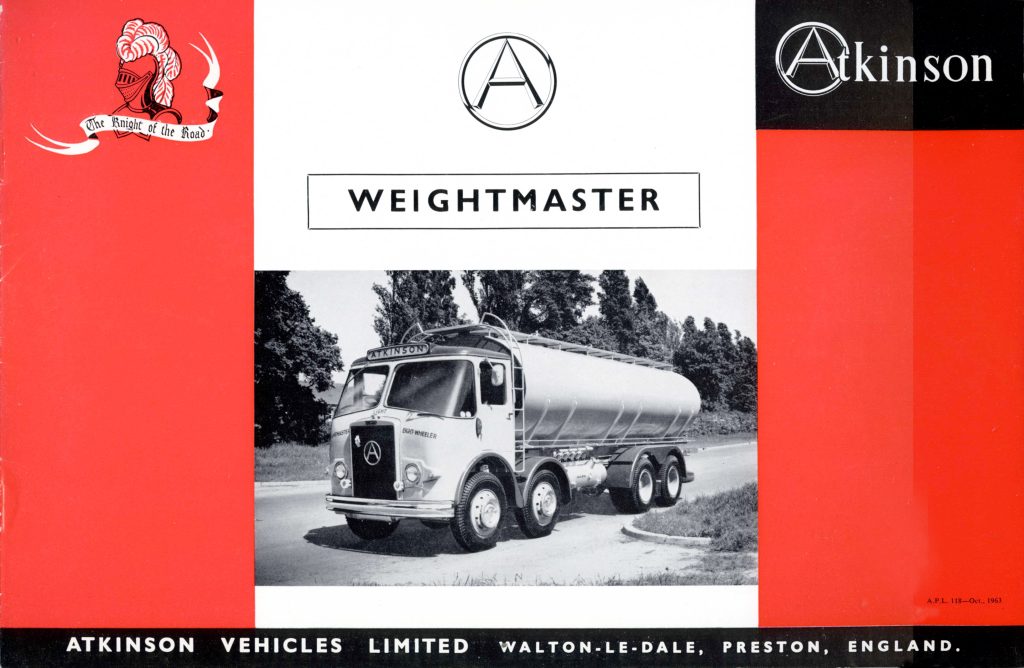
A little earlier, in July 1962, Atkinson had begun to offer a lightweight range with the Mk.1 cab called the ‘Weightmaster’. Perhaps the decision was influenced by the likes of the Foden K-series, Leyland’s LWO ‘Low-weight’ Octopus and the Guy Warrior all of which aimed to cut down on unladen weight. The Weightmasters were a completely new breed of Atkinson with a narrower chassis and overslung rear springs – moving away from old fashioned practices that had characterised Atkinsons for decades.
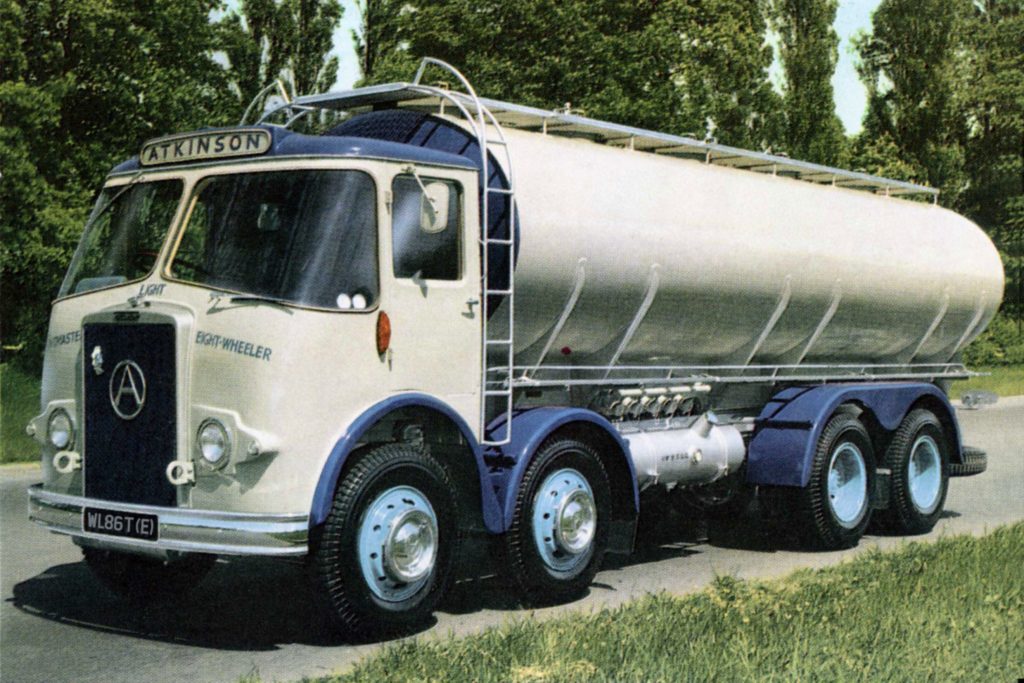
The Weightmaster range was quite comprehensive, encompassing eight models – five four-wheelers including one tractor unit, two six-wheelers and an eight-wheeler. The four-wheelers had the low-revving Gardner 5LW (with 94bhp at 1700rpm) as standard plus the option of the higher-revving Perkins 6.354 with 112bhp at 2,800rpm. Likewise, the same engines went in the six-wheelers but with the added option of the 6LW which also developed 112bhp but at 1,700rpm. Eight-wheelers just had the Gardner 6LW.
Weightmaster Designations
Weightmasters had their own series of model designations. Four-wheelers were WS45(E), WM45(E) and WL45(E) (short, medium and long wheelbase) while the tractor unit was WT45(E). Six-wheelers were WM65T(E) and WL65T(E) while the eight-wheeler was WL86T(E). The ‘T’ signified trailing axle. Unlike Atkinson’s mainstream multi-wheelers they were all single-drive, featuring an Eaton ‘18802’ 2-speed axle as standard.
Outwardly the Weightmaster models were difficult to tell from the standard Mk.1s, the obvious giveaway being the rear hubs. When it came to weight-saving they certainly achieved their aim. In the case of the WL86T(E) rigid eight, this weighed just 5 tons 15 cwt in chassis-cab form – almost a ton lighter than its L1786X counterpart which tipped the scales at 6 tons 14.75 cwt.
Big changes for 1964
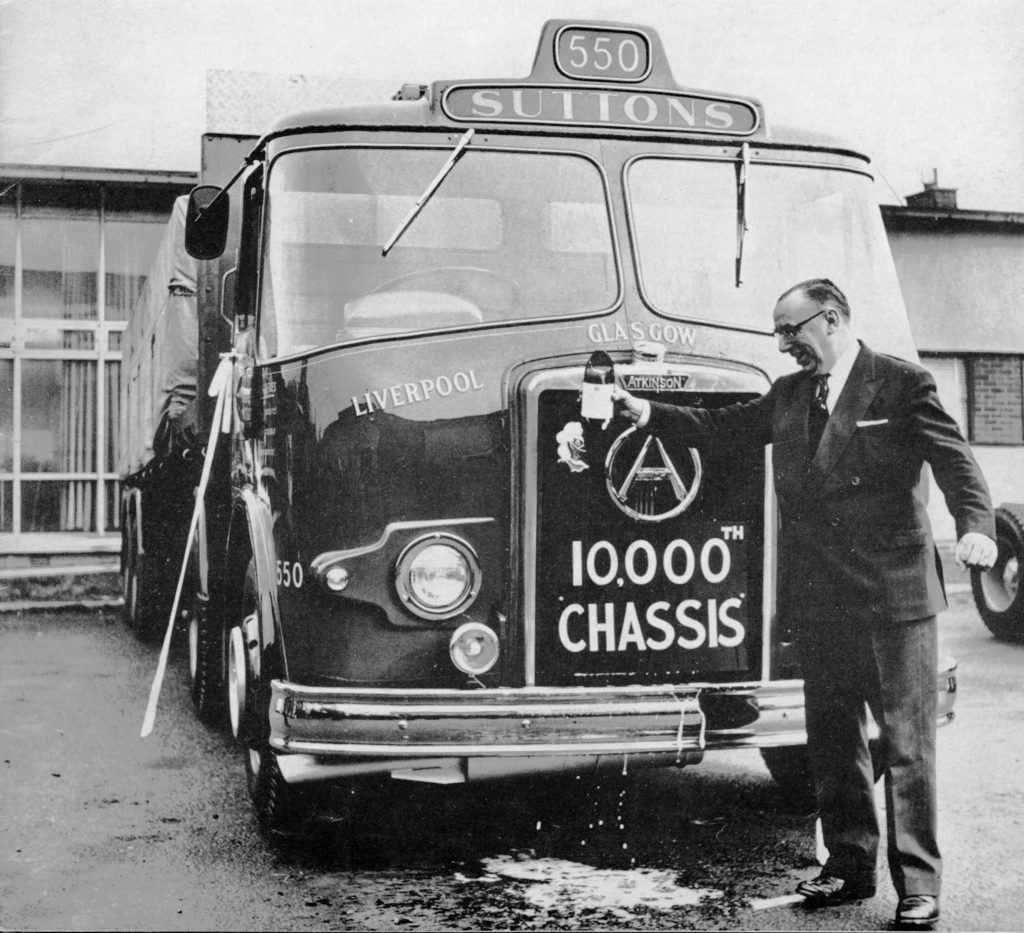
As the 1960s progressed, the Construction & Use Regulations of 1964 brought about huge changes for the whole industry. There was rapidly growing demand for tractor units to meet the new 32ton gross weight limit. Demand for tractors was soon overtaking that for rigid-eights as the industry adjusted to the new era.
New 16ton gross four-wheelers had a choice of 5LW or 6LW Gardner engines with David Brown gearbox and an Eaton two-speed axle as standard. The Gardner 6LX ‘150’ became standard on all six- and eight-wheeled rigids. These had the David Brown 657 overdrive ’box and Kirkstall rear bogie with a choice of double-drive or trailing axle. The latter models had a ‘T’ suffix added e.g. L2486XT.
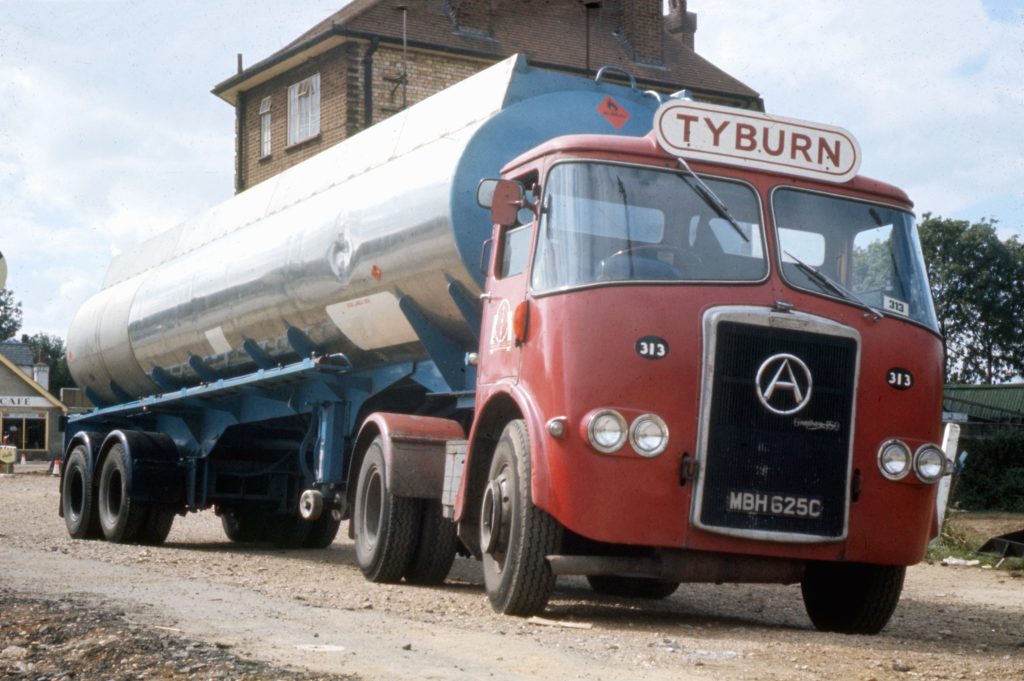
Atkinson MK1 gets Cummins power
One completely new model was added to the range and that was the twin-steer 32-ton 6×2 tractor unit TS3266C. The ‘C’ signified a Cummins engine, marking something of a departure for Atkinson who had always majored on Gardner. True, some AEC engines were also fitted but Gardners were always the main offering. The move over to Cummins was necessary as even the 6LXB was underpowered at 180bhp. The TS3266C and its T3266C 6×4 sibling had the 12-litre Cummins NH-220 with a net output of 212bhp.
When these six-wheeled tractor units were introduced they were seen as essential for the new 32 tonner age. The twin-steer was the preferred model as it was lighter than the 6×4. The new legislation led to a surge in demand for such units as they could qualify for the new weights with existing tandem-axle trailers. In theory the law did permit 32tons on four axles but only on a combination with an outer axle spread of 38ft. Because the overall length of an artic was, at first, limited to 13m (42ft 8in) it was virtually impossible to meet the 38ft minimum axle spread requirement.
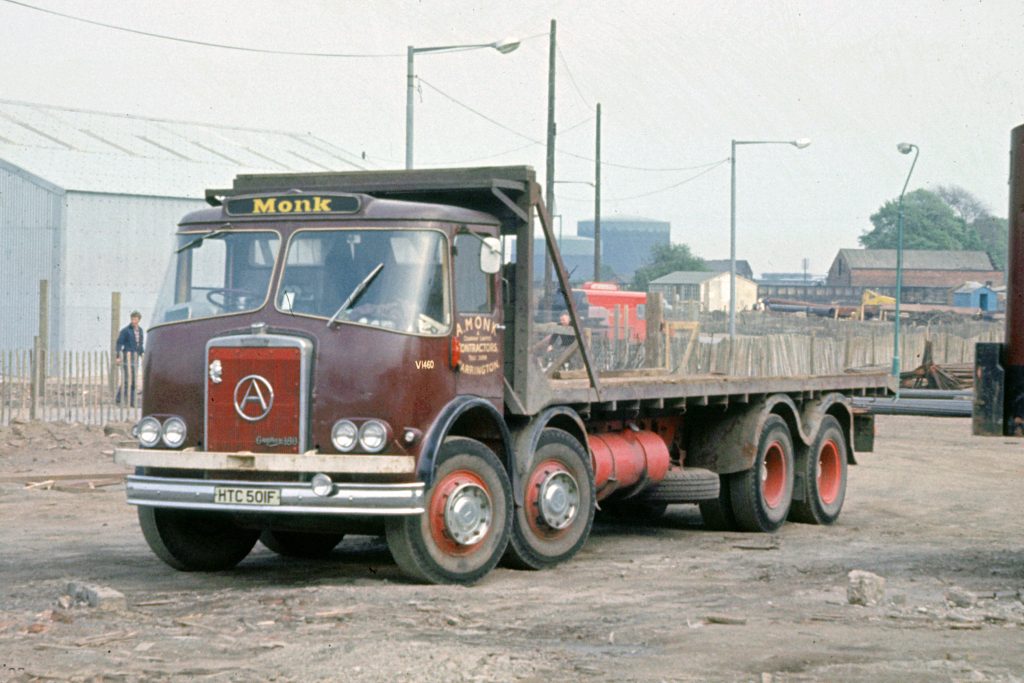
Atkinson MK.1 twin-steer
Later the ‘pen-pushers’ who came up with ‘13m’ saw the error of their ways and upped the overall length to 15m. This was also vital to the handling of the new 12m ISO shipping containers that were increasing in use. Once the length limit was increased around 1968, demand for ‘Chinese Six’ units gradually tailed off and they were eventually phased out as demand diminished. There was a corresponding increase in 2-axled tractors rated for 30 to 32tons gross.
Although the ‘Chinese Six’ tractors lost ground another type of twin-steer, namely the TRS3266 ‘rear-steer’ was introduced in 1966 and very soon became an important seller. These were available with a choice of engines from Gardner (TRS3266XB), Cummins (TRS3266C) and Rolls-Royce (TRS3266RR). The engines were the Gardner 6LXB ‘180’, Cummins NHK-220 and the RR Eagle 220. While the David Brown 6-500 gearbox was available the more powerful engines took the ZF AK6-75. These also had a Kirkstall axle while the Gardner model had an Eaton 19800 axle.
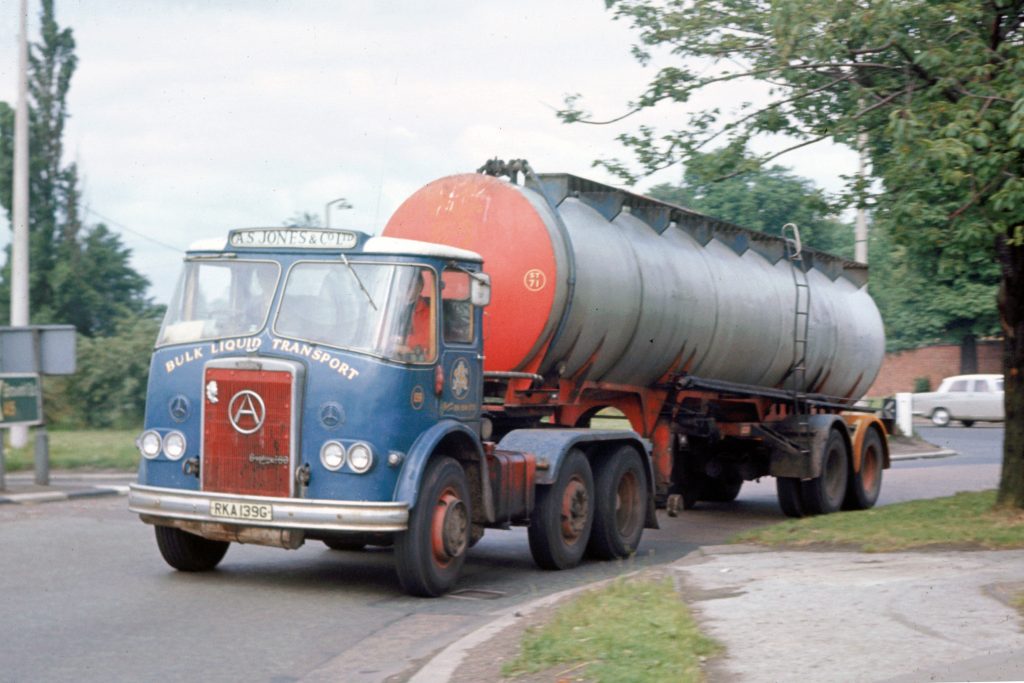
It was in 1966 that Atkinson began naming their lorries. Mk.1 cabbed tractor units were dubbed ‘Silver Knight’ while rigids were called ‘Black Knight’, for haulage models, and ‘Gold Knight’ for tippers and mixers. As we all know, the practice of naming the vehicles as well as having model designations continued right through to the end when, as part of Seddon Atkinson, the company lost its autonomy and the Atkinson name was finally phased out in 1975.
Specials
As well as being standard fitment across the haulage range, the Mk.1 cab was also fitted to a few special models like the Motorway gritters and heavy haulage tractors for up to 50/60 tons gross. Despite all of Atkinson’s attempts to modernise their image, the Mk.1 cab carried on with its much-cherished outside radiator right up to its demise in 1968. In a way the Mk.2 replacement carried on the tradition except that the Mk.2’s radiator was a dummy.
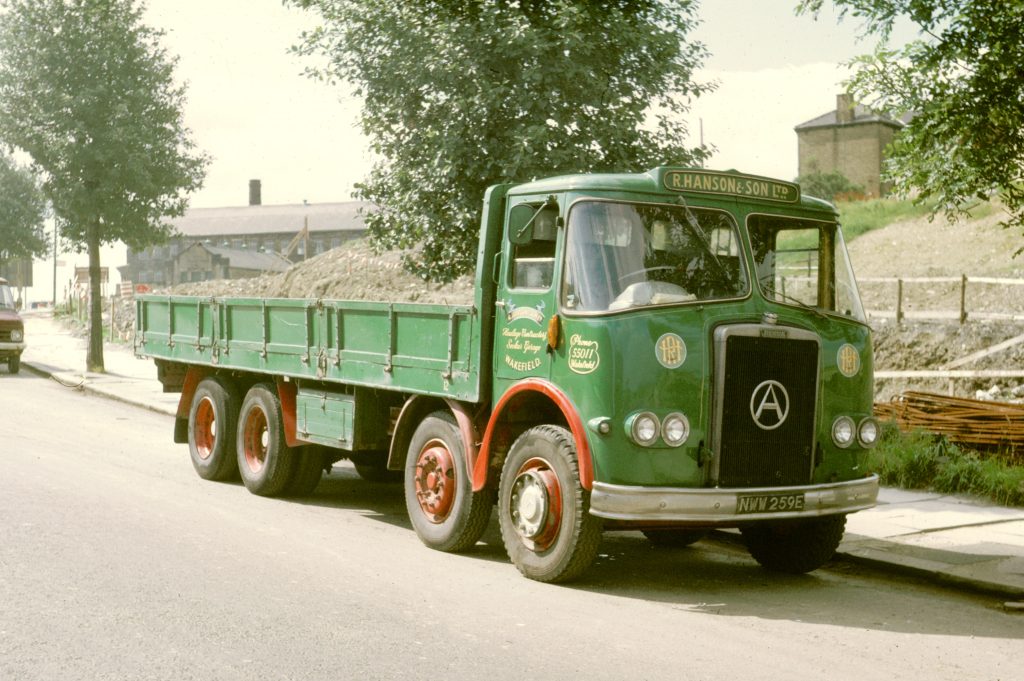
To read more articles like this every month, subscribe to Classic & Vintage Commercials magazine by subscribing here. And find the latest news, exclusive looks and more at the CVC website here.

